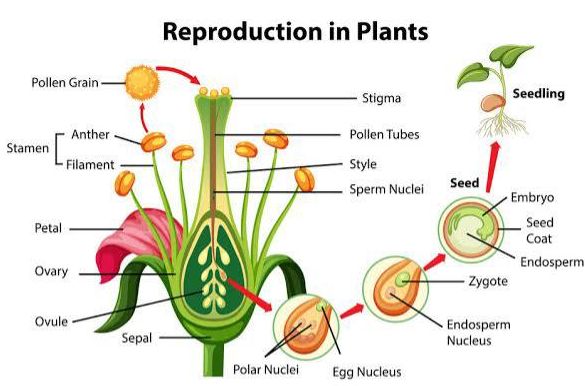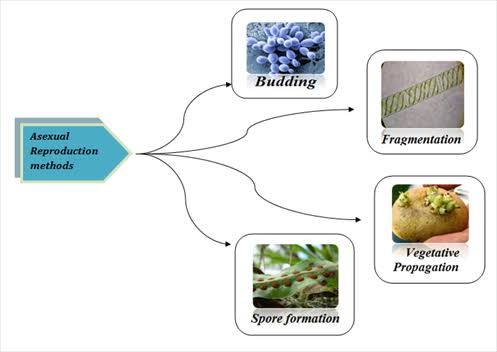Chapter 12: Reproduction in Plants

Plant reproduction is the production of new offspring in plants, which can be accomplished by sexual or asexual reproduction. Sexual reproduction produces offspring by the fusion of gametes, resulting in offspring genetically different from either parent. Asexual reproduction produces new individuals without the fusion of gametes, resulting in clonal plants that are genetically identical to the parent plant and each other, unless mutations occur. Asexual reproduction does not involve the production and fusion of male and female gametes. Asexual reproduction may occur through budding, fragmentation, spore formation, regeneration and vegetative propagation.
Modes of reproduction

Depending on the number of parents involved, there are different modes of reproduction. Every living organism reproduces by either of the two modes i.e. sexual reproduction or asexual reproduction. The different modes of reproduction in animals and plants are explained below.
Sexual reproduction
It is the mode of reproduction in which gamete cells from two organisms, one male and one female, combine to form a singular zygote. This zygote shares half of its genetic information with the father and the other half with the mother.
Asexual Reproduction
It is the mode of reproduction which involves only one organism. The offspring that is produced is genetically identical to the mother and almost always has the same number of chromosomes. Hence, they are called clones. Moreover, they are exact copies of their parent cell.

 Grow Career Publication
Grow Career Publication
